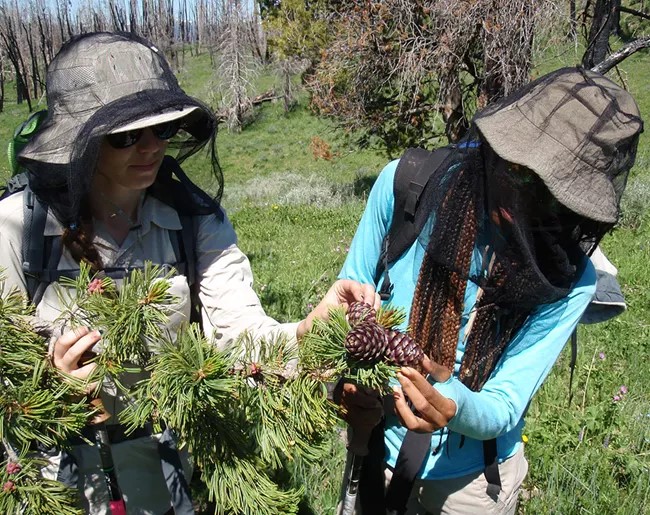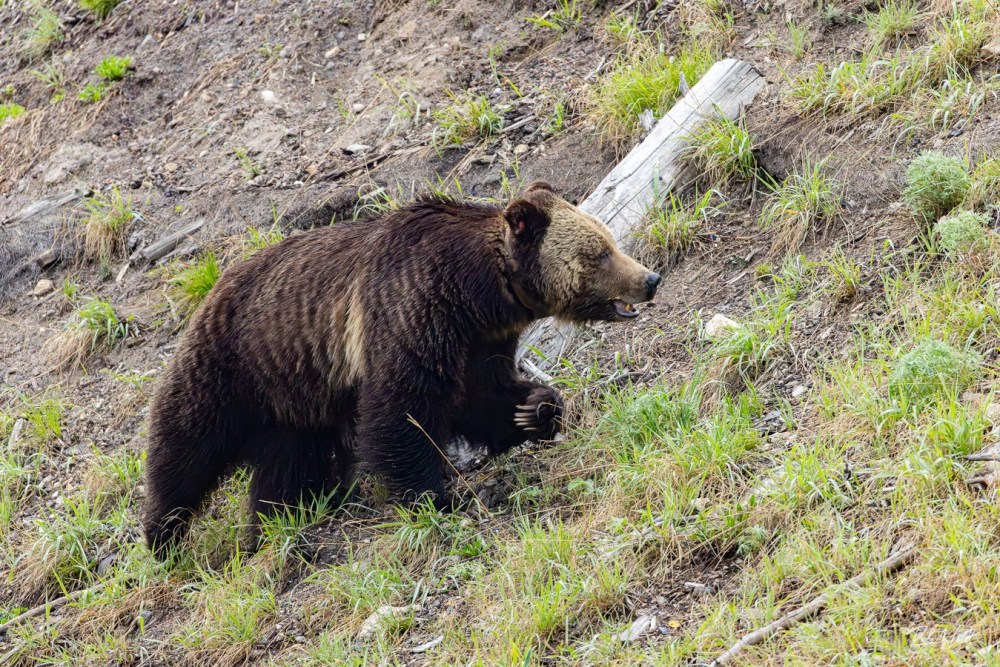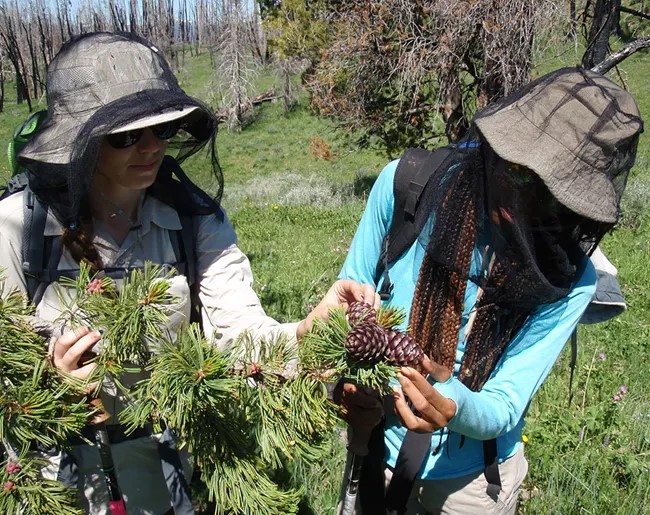A Race for Calories in Autumn – Grizzly Bears, Pine Nuts, Migrating Moths, and Where to Find Them

The grizzly bear, (Ursus arctos horribilis), has become an icon of Yellowstone National Park and of the wilderness in general. For a large portion of Yellowstone visitors, a grizzly bear sighting ranks right up toward the top of the bucket list, alongside witnessing such famous attractions as Old Faithful Geyser, the Grand Canyon of the Yellowstone River, and Grand Prismatic Spring. But for people visiting in late summer and early fall, those grizzly bear sightings can be few and far between. Why do bears suddenly seem to disappear in August and September? And where are they going?
To answer this question, we need to understand what motivates bears above all else: food.
By the time summer transitions into autumn, a bear’s chief concern is to pack in enough calories and build enough body fat to successfully hibernate through the next winter. And bears are well-adapted to this task; they are one of the truest examples of the word “omnivore,” capitalizing on a dizzying array of dozens of different food sources throughout the year. Everything from plants to insects to bison will be on the menu for the average grizzly bear. But food sources that pack a high-calorie, high-protein punch are especially coveted. And what could be more calorie-packed than a big, juicy bug?

A grizzly bear’s long claws are the perfect tool for flipping over boulders in search of the tasty moths hiding underneath. Photo courtesy Yellowstone Wild Guide Rob Harwood / Rob Wild Photo
That’s right: bugs. Specifically, the army cutworm moth (Euxoa auxilliaris). These tiny creatures begin their larval stage in the lowlands of the Great Plains, hundreds of miles away from Yellowstone. As summer arrives and temperatures warm, the larvae transform into adult moths and begin their migration toward the mountains. By mid to late summer, the moths have settled in high-elevation boulder fields and talus slopes, where they feast on nocturnally-blooming wildflowers by night and roost in the shade under rocks by day.
Meanwhile, the grizzlies complete a migration of their own, albeit much shorter. Traveling from miles around, grizzlies congregate in these boulder fields and turn over rocks to dine on the moths hidden underneath. By this point in the season bears are in a period of obsessive eating called “hyperphagia,” trying to pack in every last ounce of body fat before the winter arrives. And these moths are the perfect feast. Sure, it’s tedious work to lick up something so small when you are as big as a grizzly, but the payoff is significant. A grizzly can consume as many as 40,000 moths in a single day, totaling roughly 20,000 calories per day!
Army cutworm moths may be the big-ticket menu item, but there are other food sources that can also draw bears to high elevations in late summer. Whitebark pine is a high-elevation tree species that goes through cycles of cone production. In some years—known as mast years—the trees produce an abundance of cones and seeds, followed by several years of little to no cone production. During those mast years whitebark pine nuts are another major source of fat and energy during grizzly bears’ hyperphagia phase.

The cones of a whitebark pine tree are another important high-elevation food source for grizzly bears during mast years. Photo courtesy NPS/Erin Shanahan
Top all of this off with the fact high elevation brings more pleasantly cool temperatures, and it is no wonder why grizzlies move up into the mountains in late summer. If grizzlies are on your bucket list and you are visiting in mid to late summer, try your luck in areas where the road takes you into the subalpine zone, such as Dunraven Pass or Sylvan Pass. And if you are traveling on foot through this type of terrain in the backcountry, be extra diligent, make noise, and carry bear spray and know how to use it. A demonstration on bear spray use can be found here.

To learn more about Yellowstone Wild Guide Rob and the rest of the Yellowstone Wild team visit our “About Us” webpage.
